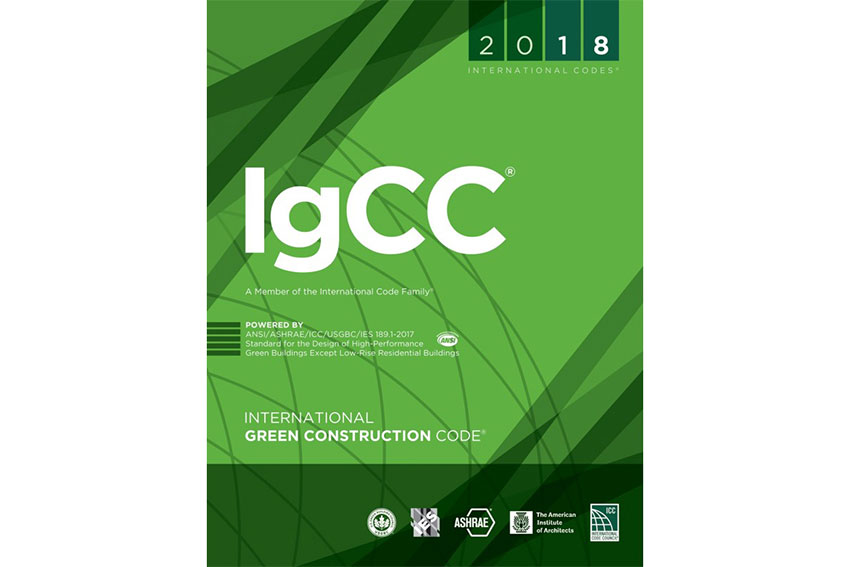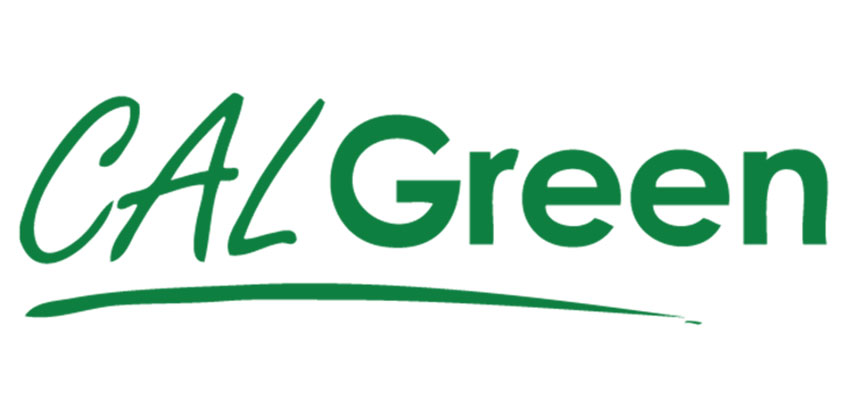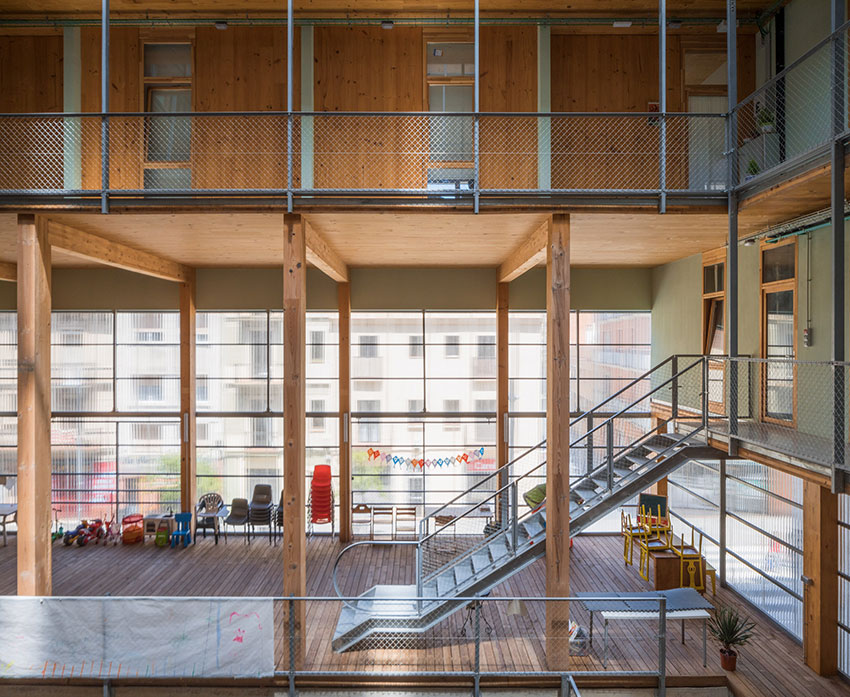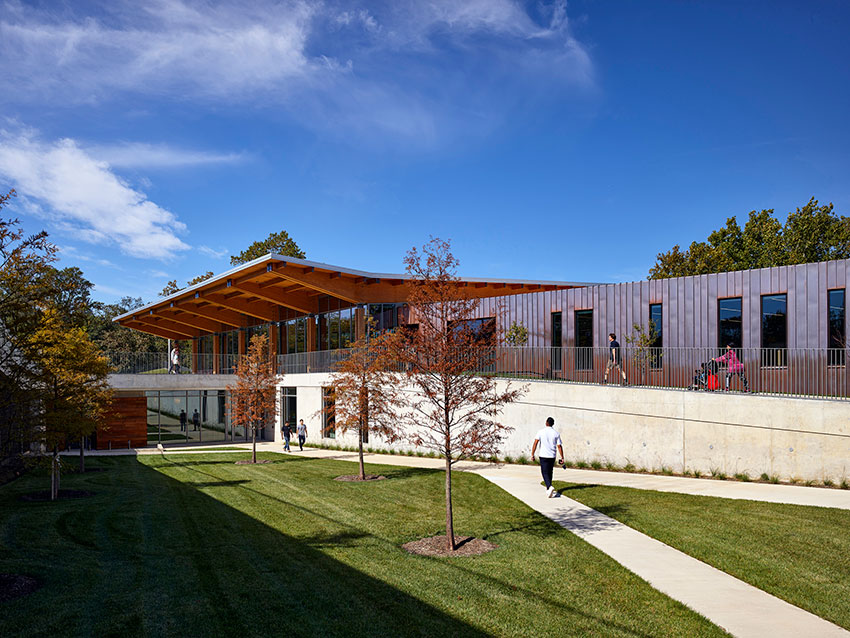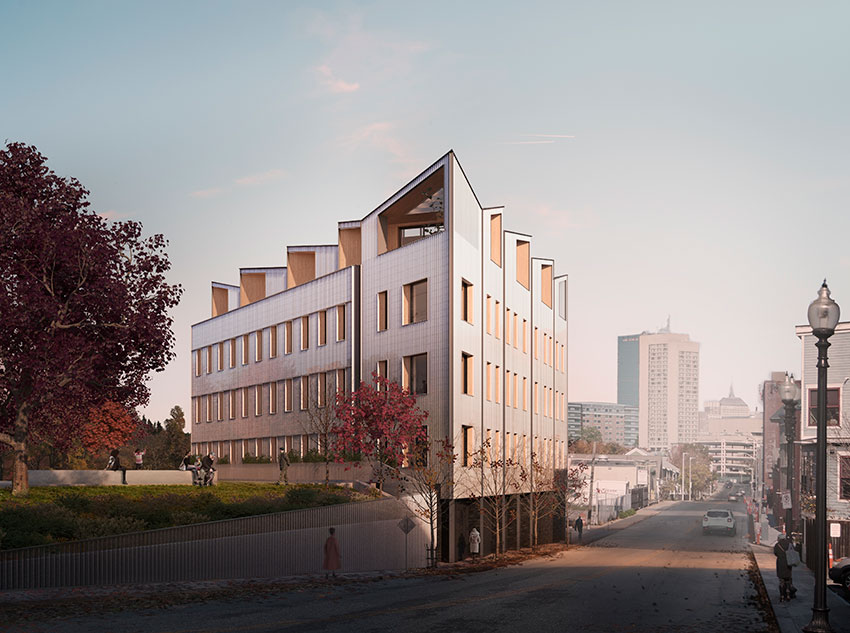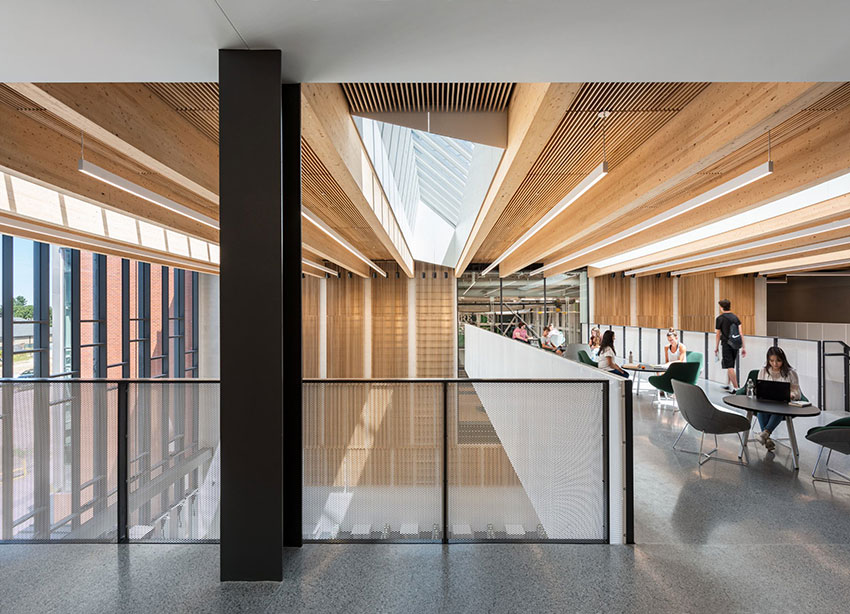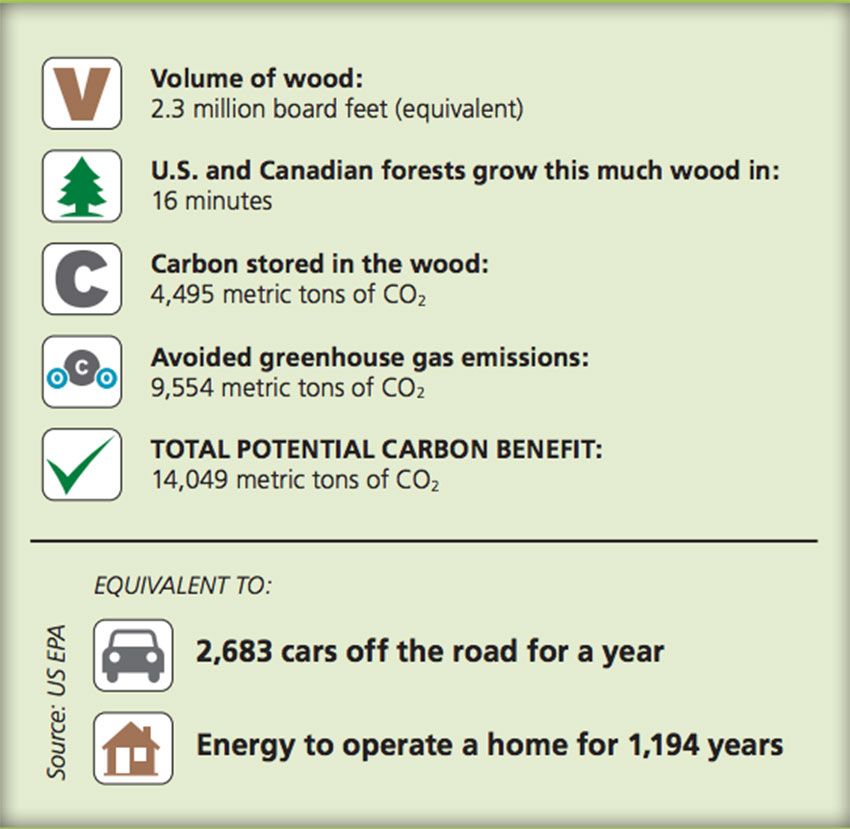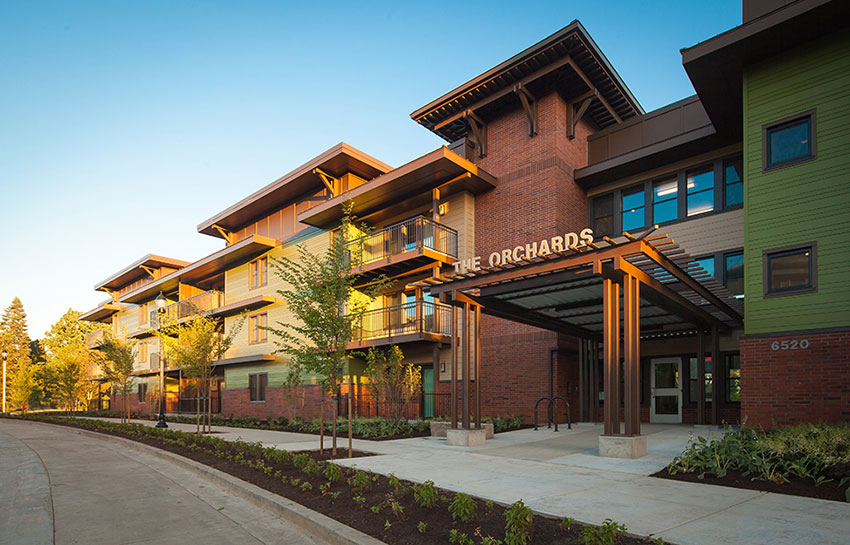International Code Council's 2018 International Green Construction Code (IgCC)
The IgCC is considered an overlay code because it is consistent with other International Code Council (ICC) model building codes, including the International Building Code (IBC). The IgCC covers all types of new and existing commercial buildings, and establishes minimum regulations using both prescriptive and performance-related provisions. Some jurisdictions recognize the IgCC as an equivalent standard to LEED certification requirements, while other jurisdictions have chosen to adopt only specific parts of the IgCC.
The IgCC was launched in 2009 and there have been many updates and improvements to the code since. One of the most important updates can be found in the 2018 edition of IgCC, which incorporated the provisions of ASHRAE Standard 189.1, Standard for the Design of High-Performance Green Buildings Except Low-Rise Residential Buildings, to provide designers with a unified green building code.
The IgCC takes an integrated, whole-building approach to green building design, incorporating measures that address the efficiency and sustainability of an entire building project and encouraging the use of low-impact materials and construction techniques. Most references to wood use are found in the Materials and Resources chapter, which covers the environmental and human health impacts of materials, including resource conservation, reduced life-cycle impacts of building materials, impacts on the atmosphere, product transparency, and waste management.
Many IgCC requirements overlap those of the green building certification programs. For example, several LEED v4 credits correspond directly with specific requirements of the 2018 IgCC.
2019 CALGreen
California was the first state in the U.S. to adopt a state-mandated green building code. CALGreen was first published in 2009 with four goals: reduce greenhouse gas emissions from buildings; promote environmentally responsible, cost-effective, healthier places to live and work; reduce energy and water consumption; and respond to the environmental directives of the administration. Their original goal was to reduce greenhouse gases to 1990 levels by 2020.
The code covers regulations for energy and water efficiency and conservation, material conservation and resource efficiency, environmental quality, and more. It also details job site waste reduction guidelines. CALGreen considers LCAs, using the Athena Impact Estimator, GaBi, and SimaPro LCA tools.
End Notes
1 Survey: Architect Perspectives On The Future Of Wood, AIA & Think Wood, 2019
2 Urban Land Institute, page 4
3 Carbon Implications of Building Materials Selection, Dovetail Partners
4 Architecture 2030
5 Doing Right by Planet and People, The Business Case for Health and Wellbeing in Green Building, World Green Building Council, April 2018
6 CORRIM.org; Cooperative Extension, United States Department of Agriculture
7 Alvarez, Mila. 2018. The State of America’s Forests. Greenville, SC: U.S. Endowment for Forestry and Communities, Inc.
8 National Forest Certification Study; An Evaluation of the Applicability of Forest Stewardship Council (FSC) and Sustainable Forest Initiative (SFI) Standards on Five National Forests, Pinchot Institute for Conservation
9 Washington State Department of Natural Resources
10 Oregon Forest Facts 2017 - 18 Edition, Oregon Forest Resources Institute
11 USGBC
12 APA Standards
13 American Wood Council
14 Dovetail Partners, Inc.
15 ISO 14025
16 ISO 21930
17 NGBS Green Certified Products
18 Performance Rated Panels, F405, APA-The Engineered Wood Association
19 Dovetail Partners Inc.
20 Thermal Conductivity of Wood Compared with Other Materials, American Wood Council
21 Sustainable Buildings, Sustainable Future, APA – The Engineered Wood Association
22 Modular Construction: From Projects to Products, McKinsey & Company, June 18, 2019
23 Alignment of LEED and the 2018 IgCC, U.S. Green Building Council
24 California State Building Standards Commission
25 U.S. Green Building Council
26 PHIUS
27 PHI
28 PHIUS
29 www.fastepp.com/portfolio/mec-headoffice
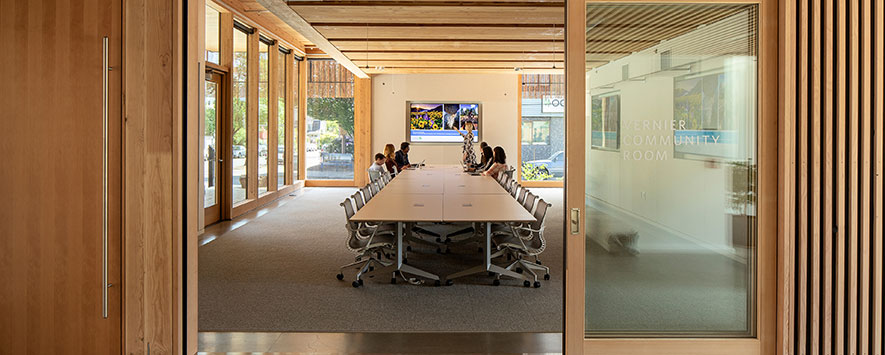
Photo courtesy of Jeffrey Roscoe
LCA tools and carbon calculators.
The complex process of building design and construction must meet many criteria – aesthetics, safety, budget, code compliance, occupant comfort, durability, and more. Architects and other design professionals are increasingly recognizing the value of adding green building to the list.
This course will help you understand that sustainable design begins with sustainable building materials. Because there are many factors to consider in assessing a building’s sustainability, it can be challenging to fully understand the long-term impacts of choosing one building material over another. However, material choice greatly affects the environmental impact of buildings, both during construction and over the building’s life cycle.
Because 80 percent of a building’s embodied carbon comes from the structural materials used to build it, building material specification is impactful. “Upfront” embodied carbon is the total amount of greenhouse gas emissions associated with the harvesting/extraction, transportation, and manufacturing of materials used in building construction. The effects of sustainable building design extend well beyond the construction phase to the way a building performs over its lifetime─through lower energy use (operational carbon) and occupant health and well-being, for example.
Architects can incorporate sustainable features into their designs through their choice of building materials. Wood building products and components fit well within many sustainable building scenarios, while also adding other benefits such as natural warmth and beauty. Wood is a versatile, durable building material that can be used in almost any building application. It is renewable and sustainable, and wood products typically require less energy to produce than other building materials. Green building standards also recognize wood’s contribution to improved energy performance over time.
The Basics Of Green Building
The world’s ability to meet climate goals depends on reducing carbon emissions, and the building industry accounts for nearly 40 percent of annual global CO2 emissions. Architects and designers are showing that buildings can be constructed sustainably, with a reduced carbon footprint, while still meeting critical design goals including functionality, cost, comfort, and more.
While there are many ways to approach it, the goal of green building is to design projects and use construction processes that are environmentally responsible and resource-efficient and to reduce carbon emissions both during construction and throughout a building's life cycle. This can be accomplished a number of ways, from smart site selection and construction material choice to how the design and building materials impact energy use over the life of the building.
A 2018 study from the World Green Building Council found that additional costs of green building can be outweighed by the life cycle benefits of creating a better building, which include lower energy consumption, improved occupant satisfaction and well-being, and better financial performance in terms of improved lease rates and developer return on investment. The 71 global companies that participated in the study found that staff turnover and absenteeism decreased while productivity and job satisfaction increased–all of which translate to measurable economic benefits.
Tools Used To Assess Green Building Certification
There are as many reasons to pursue green building certification as there are certification programs from which to choose. Certification can be used to comply with client, civic, or jurisdictional requirements; it can also serve as a marketing tool for the building owner to help attract tenants.
To understand green building certification, it is important to become familiar with the primary methods that are used to assess certification requirements.
Life Cycle Assessment (LCA)
An LCA is a performance-based methodology that measures the environmental impact of a product, assembly, or structure over its life span; it’s a way to assess the sustainability of a building and its constituent parts. LCA measures the energy required to both construct and operate a product or building over its lifetime, beginning with the extraction or harvest of the material through to its manufacture, distribution, installation, use, and end-of-life disposal.
LCA analysis is required for many green building certification programs; results allow project teams to understand the overall impact of choosing one building product or construction system over another. LCA studies consistently show that wood products have a lower environmental impact than alternative materials. The Consortium for Research on Renewable Industrial Materials (CORRIM) has done numerous LCA studies comparing wood products to other building materials, and has found that wood has lower carbon emissions and uses less overall energy to produce than other products.
There are numerous LCA options available to help guide design decisions by evaluating the environmental impact of everything from individual building products to entire buildings, known as WBLCA (Whole Building Life Cycle Assessment).
LCAs provide varying levels of detail and complexity:
- Athena EcoCalculator is a free tool that measures the LCA of common building assemblies. Data is pulled from a library of predefined options for quick and simple assessments. Separate calculators are available for commercial and residential assemblies, and calculations are based on an assumed building service life of 60 years.
- Athena Environmental Impact Estimator is a more robust tool that evaluates whole building LCAs; it also measures the environmental impacts of the building’s ongoing operation, allowing for easy comparison of design options. This tool can be used for new construction, renovations, and additions on all building types.
- The Embodied Carbon in Construction Calculator (EC3) is a database populated with product EPDs. It is useful after a building has been designed. SimaPro and GaBi Solutions are life cycle inventory databases that also have tools to conduct an LCA and measure the environmental impact of individual building products.
- Tally, a Revit software plug-in, uses the GaBi database to evaluate WBLCA.
- One-Click is another LCA tool that can be used for early design optimization, life-cycle costing, and benchmarking against similar projects and other metrics.
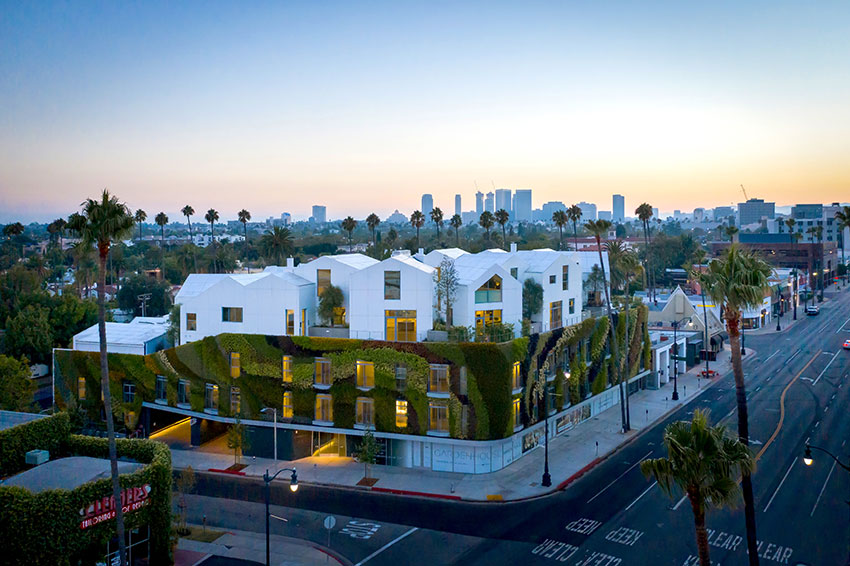
Table courtesy of ThinkWood
LCA tools and carbon calculators.
Forest Certification
Forest certification programs help ensure that a forest landowner is following sustainable forest management practices, including harvest methods and replanting. There are several programs used in North American forest management:
- American Tree Farm System (ATFS)
- Canadian Standards Association (CSA)
- Forest Stewardship Council (FSC)
- Sustainable Forestry Initiative (SFI)
For each, a third-party certifier evaluates the forest management practices being followed by landowners and foresters against the organization’s requirements. While all have the same basic mission—to provide guidelines that support sustainable forest management—there are differences in the requirements of how each program is structured.
It is important to recognize that forests are not required to be certified. Some private and public landowners follow sustainable forest management practices but choose not to pay for certification. In contrast, some lands are certified by multiple programs. As of 2017, nearly 100 million acres of U.S. forested land were certified; about 15 percent was certified by more than one program. Canada had more than 430 million acres of certified forests, and about 10 percent of that had double certification.
U.S. federal timberlands are not certified, but this does not mean they are not being sustainably managed. In 2007, the Pinchot Institute conducted a study of five national forests and found their management practices met many of the certification requirements in terms of forest planning, protection of threatened and endangered species, and others.
Many state regulations meet or exceed forest certification requirements. For example, all forestlands and conservation areas managed by the Washington State Department of Natural Resources (2.4 million acres) are certified under the SFI program. About 176,000 acres of those forestlands are also certified under the FSC U.S. Forest Management Standard. In 2016, nearly 5 million acres of Oregon timberlands were certified by ATFS, FSC, or SFI.
While several green building standards have required use of wood from certified forests in the past, many are also now recognizing wood harvested from what is known as legal, or responsible, product source categories. A responsible source is defined as a forest site that is replanted after harvest by trained loggers, where endangered species are protected and best management practices are followed. Once the responsible source is established and verified, its products must be delivered through a chain-of-custody (CoC) that can be used to obtain credit under the green building standard. CoC documentation verifies the source of the timber as it moves from forest to construction site.
Leadership in Energy and Environmental Design (LEED), one of the most well-known green building certification programs, requires that wood products be from certified forests. However, LEED v4.1 has a Pilot Alternative Compliance Path, allowing wood products sourced from ASTM D7612-certified forests to earn LEED credit if they are all from legal (noncontroversial) sources such as forests managed using responsible practices and if at least 70 percent (based on cost) are from responsible sources.
Environmental Product Declarations (EPDs)
While forest certification verifies that a forest is being managed sustainably, an EPD is a way to verify the environmental impact of a specific product. EPDs allow architects to evaluate a product’s lifetime environmental impact in terms of embodied energy, carbon emissions, and waste generation, as well as for other factors such as global warming and ozone depletion. When considered alongside other factors such as recycled content or VOC emissions, EPDs help architects make informed building material choices.
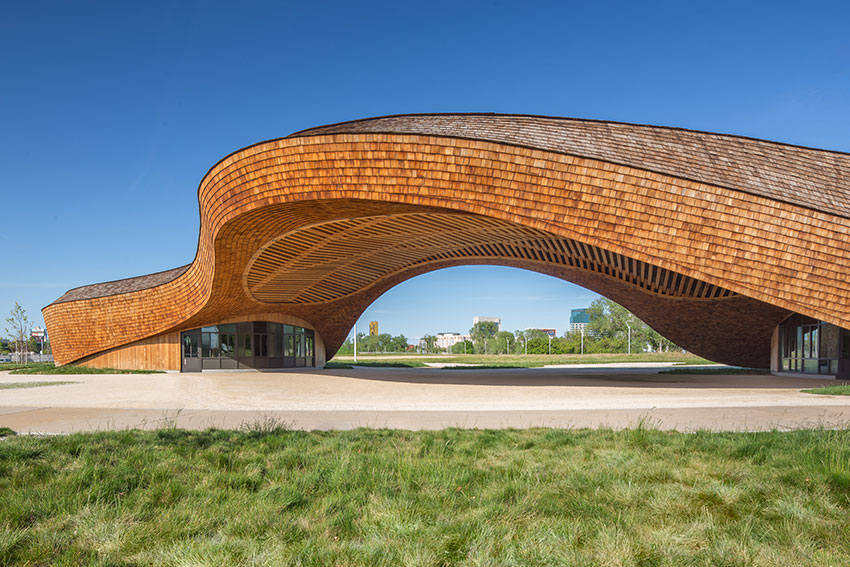
The International EPD System is a global program for environmental declarations based on ISO 14025 (Environmental Labels and Declarations) and the European standard EN 15804 (Sustainability of Construction Works - Environmental Product Declarations - Core Rules for the Product Category of Construction Products). Wood EPDs are third-party verified by UL Environment, an independent certifier of the sustainable attributes of various products. EPDs for softwood lumber and plywood, oriented strand board (OSB), glue-laminated beams (glulam), laminated veneer lumber (LVL), wood I-joists, laminated strand lumber (LSL), and other wood building products are published by the American Wood Council.
Wood EPDs take a “cradle-to-gate” approach, measuring environmental impact from raw material harvest through manufacturing to the point when the product is ready to ship from the manufacturing facility. Since wood products are manufactured all across North America, and since they are used in many applications, it is difficult to make assumptions about their end-use environmental impact, which makes “cradle-to-grave” or “cradle-to-cradle” measurements difficult to obtain.
EPDs are becoming increasingly important in building design and construction. Products with verified EPDs can receive credit through LEED v4.1, Green Globes, and other green building rating systems. EPDs can also be used to show compliance with International Green Construction Code (IgCC) and other green building codes. In fact, the 2018 IgCC requires that at least 10 materials installed in a building have an EPD.
Green Building Rating Systems
There are many reasons a building owner chooses to seek green building certification for their project. Some state and local governments have made certification a requirement to meet energy efficiency goals. Some certified buildings may qualify for tax-related incentives. Additionally, developers are finding that a growing number of commercial and residential tenants have their own sustainability goals or commitments which factor into their choice to live or work in a certified green building. At the same time, some building owners require that their project be designed to follow green building standards, but they don’t apply or pay for certification. Regardless of the reason, architects have numerous building standards, certifications, and rating systems available to help guide them toward sustainable design principles. Virtually all of them emphasize efficient use of building material resources, as well as energy and water use, indoor air quality, and other factors.
There are many well-known national green building certification programs, including:
- Leadership in Energy and Environmental Design (LEED)
- Green Globes
- National Green Building Standard (NGBS)
- Living Building Challenge, Energy Star, BREEAM (Building Research Establishment Environmental Assessment Method), and others.
The environmental advantages of using wood products are recognized by each certification system, but each program varies in how wood use is credited. With two of the most well-known programs, LEED v4 and Green Globes v1.4, it is possible to earn 8 to 10 percent of potential credits through substantial use of wood in construction.
Green building rating systems also assign credits based on the use of LCA tools, renewability of the resource, EPD availability, forest certification, locally produced materials, third-party certification, ability for materials to be recycled, and more.
LEED
LEED is one of the most well-known green building rating systems. Operated by the U.S. Green Building Council (USGBC), the current version is LEED v4.1. LEED’s Building Design and Construction rating system can be used to certify new construction and major renovation projects for many building types including mixed-use, retail, hospitality, education, and healthcare.
LEED gives designers the ability to earn points for a project by taking design measures that are deemed to positively impact the environment, like using sustainable materials or making efficient use of resources. The number of points earned allows a project to be designated in one of four ways: Certified, Silver, Gold, or Platinum -- with Platinum being the highest level. The Alliance for Sustainable Colorado, a renovation project in Denver, qualified for LEED v4 Platinum certification, in part due to its reuse of the existing wood structural members.
LEED v4.1 uses many of the tools described above, including WBLCA, which allows for a whole building comparison of the environmental impacts of various structural materials. It also recognizes products that have a qualified EPD conforming to ISO 14025 (Environmental Labels and Declarations) and ISO 21930 (Sustainability in Buildings and Civil Engineering Works).
Use of wood as a building material is covered in the Materials and Resources Chapter of LEED v4.1 in the Building Design and Construction (BD+C) category; credits recognize wood's favorable environmental attributes such as certification, recycled content in engineered wood products, and wood that is manufactured and/or harvested within a 500-mile radius of the project.
Building designers can use the LEED credit library to determine which points can be earned for using wood. For example, using the Alternative Compliance Path in LEED v4.1, Responsible Sourcing of Raw Materials provides 1 to 2 points, rewarding project teams for selecting products verified to have been sourced responsibly. To achieve a LEED point under this criterion, the user must know that:
- 100 percent of the wood used is from legal (noncontroversial) sources, and
- 70 percent is from responsible sources
- Once the above two criteria are satisfied, then chain-of-custody (CoC) certification can satisfy the final requirement that at least 25 percent (based on cost) of all permanently installed building materials (such as structural wood framing) meet the Responsible Extraction Criteria. Wood products sourced from certified sources as defined by ASTM D7612-10 (2015) satisfy the requirements of this credit.
Green Globes
This green building assessment and certification program from the Green Building Initiative (GBI) generates a building score based on a 1000-point rating system. Green Globe certification recognizes responsible material selection as well as efforts to conserve energy and reduce water consumption over time. The assessment is verified by a third party, then awarded a rating based on accumulated points -- either one, two, three, or four Green Globes.
Like LEED, Green Globes has several qualification categories: new construction, existing buildings, core and shell, sustainable interiors, multifamily new construction, and existing buildings. The certification process evaluates multiple assessment areas, including project management, site, energy, water, materials and resources, emissions, and indoor environment. An architect’s choice of wood for structure and finish falls under the materials and resources category.
Specifying wood can help project teams achieve higher scores in their Green Globes assessment, with points related to energy and acoustic properties, renewability, and economic value to both the project itself and to the communities who manufacture the wood products.
Projects can earn points for the use of certified wood products including SFI, FSC, ATFS, and CSA. Points can also be earned for using traditional lumber framing, mass timber, and engineered wood products. Construction methodologies, like prefabricated components, also qualify for Green Globes points due to reduced construction waste.
National Green Building Standard
While many architects think of the National Green Building Standard (NGBS) as limited to single-family homes, this green building certification program covers multifamily construction as well. The goal of NGBS is to help architects build beyond existing code, to design buildings that are sustainable and cost-effective.
Approved by the American National Standards Institute (ANSI), the NGBS is a points-based system with four certification levels – Bronze, Silver, Gold, and Emerald. The current version is the ICC 700-2020 NGBS. Wood use earns points in several categories, including resource efficiency, energy efficiency, and indoor environmental quality. In fact, several wood product manufacturers have specific NGBS-certified products available. NGBS compliance is verified by third-party inspectors overseen by Home Innovation Research Labs.
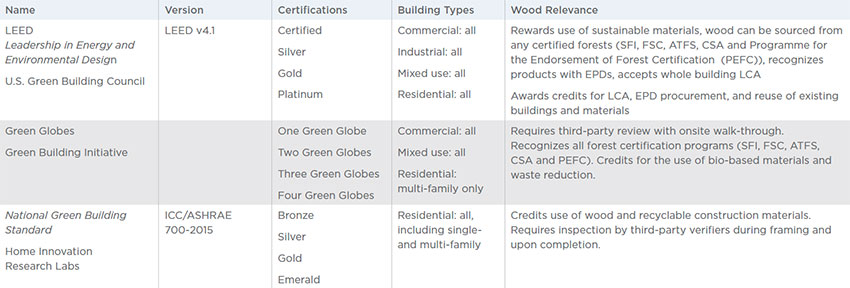
Green building rating and certification systems.
Building Sustainably Using Wood
When designing to meet green buildings standards, wood adds value on a number of levels. Wood is the only major building material that is renewable. As trees grow, they release oxygen and absorb CO2. And when those trees are harvested, the carbon is sequestered and held in the wood for as long as the wood remains in use.
When wood is used for the structure of a building, it reduces the carbon footprint in two ways – through carbon storage and through avoided greenhouse gas emissions, since wood products use less energy from fossil fuels in their manufacture than other materials. In fact, wood products comprise 47 percent of the industrial raw material manufactured in the U.S., yet consume only 4 percent of the energy needed for production. Every ton of wood used in place of an alternative building material potentially avoids 2.1 tons of carbon, or 7.7 tons of carbon dioxide equivalent (CO2e).
Wood building materials also provide benefits for the ongoing operating efficiency of a building. Wood has a relatively high R-value which provides good insulating value. Wood also has lower thermal conductivity than other materials such as steel or concrete, making wood-framed buildings more efficient to insulate. Light-frame wood, mass timber, and prefabricated wood construction can all be used to create an efficient building envelope.
One of the most effective ways to improve indoor air quality is to reduce the use of materials that emit pollutants. Wood’s natural beauty can also be left exposed to a building’s interior, eliminating the need for additional interior finishes which could add VOCs. The Oregon Conservation Center in Portland, Oregon, left its wood structure exposed to the interior, creating a natural finish for tenants.
Demand for wood products provides an incentive for forest owners to keep their lands actively managed and healthy. A young, growing forest produces 1 ton of oxygen and absorbs 1.4 tons of CO2 for every 1 ton of wood. When a forest is left unmanaged, older trees eventually stop absorbing carbon from the atmosphere and then release carbon when they decompose or die from wildfire, insect damage, or disease.
Wood Building Systems
Wood construction can support green building of many occupancy types, including multifamily, mixed-use, office, industrial, education, healthcare, and more. Three common framing types all provide green building benefits.
Light-Frame
Light-frame is the most common form of wood construction, accounting for roughly 80 percent of wood-framed construction in the U.S. Wood can be used in structural applications such as roof, floor, and wall framing, but also for other components such as doors and windows, exterior and interior finishes, trim, siding, and decking.
The two predominant types of light-frame wood construction are:
- Type III, used primarily for multifamily residential building
- Type V, which permits wood to be used for all structural elements of the building
The Orchards at Orenco project in Hillsboro, Oregon, is a good example of a light-frame wood structure that added sustainable value through its energy efficiency. Designers used 2x10 dimensional lumber to frame the walls, which gave them width to add extra insulation, reducing overall energy use of the complex by 60 to 70 percent.
Mass Timber
Mass timber framing uses large, solid wood members for walls, roofs, and floor structures. Common mass timber building components include glue-laminated (glulam) beams, cross-laminated timber (CLT), nail-laminated timber (NLT), dowel-laminated timber (DLT), and others. Mass timber fits green building goals in several ways. It replaces other more carbon-intensive structural materials with a renewable and carbon-sequestering option. Mass timber components are fabricated off-site to precise specifications, which reduces waste, speeds construction, and lowers labor costs; it also results in improved energy efficiency because the controlled fabrication process means they can build a tighter building envelope with fewer air gaps. Type IV, also known as heavy timber construction, first included CLT in 2015. The 2021 International Building Code (IBC) allows mass timber structures of 8, 12, and 18 floors. Tall wood structures make efficient use of building sites, another consideration for green building certification.
Prefabricated or Modular Wood
Use of prefabricated assemblies and full modular construction is growing because both approaches offer many benefits to green building in terms of efficient, cost-effective approaches. Both are suitable for light-frame wood and mass timber construction of multifamily, office, retail, and other types of building occupancies. A 2019 study by McKinsey & Company found that modular construction can trim costs by 20 percent and speed schedules by as much as 50 percent. Precise fabrication also improves the quality of the building envelope by improving airtightness. Plus, the controlled material procurement process ensures that certified materials are used.
Green Building Codes
When building codes initially began focusing on green building, they were concentrated primarily on improving energy efficiency. Now, building codes reflect a broader global movement to mitigate the impacts of the built environment by promoting material resource efficiency, waste reduction, indoor air quality, site selection and utilization, and more. Green building codes are designed to take a project beyond the minimum requirements in terms of energy efficiency and sustainable features. While many jurisdictions have their own requirements for sustainable building, the IgCC and CALGreen are among the most influential.
International Code Council's 2018 International Green Construction Code (IgCC)
The IgCC is considered an overlay code because it is consistent with other International Code Council (ICC) model building codes, including the International Building Code (IBC). The IgCC covers all types of new and existing commercial buildings, and establishes minimum regulations using both prescriptive and performance-related provisions. Some jurisdictions recognize the IgCC as an equivalent standard to LEED certification requirements, while other jurisdictions have chosen to adopt only specific parts of the IgCC.
The IgCC was launched in 2009 and there have been many updates and improvements to the code since. One of the most important updates can be found in the 2018 edition of IgCC, which incorporated the provisions of ASHRAE Standard 189.1, Standard for the Design of High-Performance Green Buildings Except Low-Rise Residential Buildings, to provide designers with a unified green building code.
The IgCC takes an integrated, whole-building approach to green building design, incorporating measures that address the efficiency and sustainability of an entire building project and encouraging the use of low-impact materials and construction techniques. Most references to wood use are found in the Materials and Resources chapter, which covers the environmental and human health impacts of materials, including resource conservation, reduced life-cycle impacts of building materials, impacts on the atmosphere, product transparency, and waste management.
Many IgCC requirements overlap those of the green building certification programs. For example, several LEED v4 credits correspond directly with specific requirements of the 2018 IgCC.
2019 CALGreen
California was the first state in the U.S. to adopt a state-mandated green building code. CALGreen was first published in 2009 with four goals: reduce greenhouse gas emissions from buildings; promote environmentally responsible, cost-effective, healthier places to live and work; reduce energy and water consumption; and respond to the environmental directives of the administration. Their original goal was to reduce greenhouse gases to 1990 levels by 2020.
The code covers regulations for energy and water efficiency and conservation, material conservation and resource efficiency, environmental quality, and more. It also details job site waste reduction guidelines. CALGreen considers LCAs, using the Athena Impact Estimator, GaBi, and SimaPro LCA tools.
End Notes
1 Survey: Architect Perspectives On The Future Of Wood, AIA & Think Wood, 2019
2 Urban Land Institute, page 4
3 Carbon Implications of Building Materials Selection, Dovetail Partners
4 Architecture 2030
5 Doing Right by Planet and People, The Business Case for Health and Wellbeing in Green Building, World Green Building Council, April 2018
6 CORRIM.org; Cooperative Extension, United States Department of Agriculture
7 Alvarez, Mila. 2018. The State of America’s Forests. Greenville, SC: U.S. Endowment for Forestry and Communities, Inc.
8 National Forest Certification Study; An Evaluation of the Applicability of Forest Stewardship Council (FSC) and Sustainable Forest Initiative (SFI) Standards on Five National Forests, Pinchot Institute for Conservation
9 Washington State Department of Natural Resources
10 Oregon Forest Facts 2017 - 18 Edition, Oregon Forest Resources Institute
11 USGBC
12 APA Standards
13 American Wood Council
14 Dovetail Partners, Inc.
15 ISO 14025
16 ISO 21930
17 NGBS Green Certified Products
18 Performance Rated Panels, F405, APA-The Engineered Wood Association
19 Dovetail Partners Inc.
20 Thermal Conductivity of Wood Compared with Other Materials, American Wood Council
21 Sustainable Buildings, Sustainable Future, APA – The Engineered Wood Association
22 Modular Construction: From Projects to Products, McKinsey & Company, June 18, 2019
23 Alignment of LEED and the 2018 IgCC, U.S. Green Building Council
24 California State Building Standards Commission
25 U.S. Green Building Council
26 PHIUS
27 PHI
28 PHIUS
29 www.fastepp.com/portfolio/mec-headoffice
